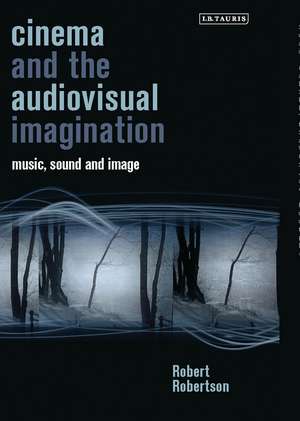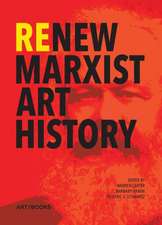Cinema and the Audiovisual Imagination: Music, Image, Sound
Autor Robert Robertsonen Limba Engleză Hardback – 29 iul 2014
Preț: 714.03 lei
Preț vechi: 1027.36 lei
-30% Nou
Puncte Express: 1071
Preț estimativ în valută:
136.63€ • 143.01$ • 113.72£
136.63€ • 143.01$ • 113.72£
Carte tipărită la comandă
Livrare economică 31 martie-14 aprilie
Preluare comenzi: 021 569.72.76
Specificații
ISBN-13: 9781780767178
ISBN-10: 178076717X
Pagini: 272
Ilustrații: 18 bw integrated
Dimensiuni: 138 x 216 x 24 mm
Greutate: 0.45 kg
Ediția:New.
Editura: Bloomsbury Publishing
Colecția I.B.Tauris
Locul publicării:London, United Kingdom
ISBN-10: 178076717X
Pagini: 272
Ilustrații: 18 bw integrated
Dimensiuni: 138 x 216 x 24 mm
Greutate: 0.45 kg
Ediția:New.
Editura: Bloomsbury Publishing
Colecția I.B.Tauris
Locul publicării:London, United Kingdom
Notă biografică
Robert Robertson is a composer and filmmaker, and the author of Cinema and the Audiovisual Imagination (I.B. Tauris, 2015), Eisenstein on the Audiovisual (I.B. Tauris, 2009, 2011), winner of the Kraszna-Krausz Foundation Prize, 2010. For more details, see Robert Robertson, British Music Collection.
Cuprins
List of Illustrations Acknowledgements Preface Introduction 1. Do The Eisenstein Thing: The Audiovisual in Spike Lee's Do the Right Thing (1989)2. Double Echoes: Music and Sound in David Lynch's Lost Highway (1997) 3. Audiovisual Irony, Terror, Ecstasy: David Lean:This Happy Breed (1944), Alfred Hitchcock: The Birds (1963), Werner Herzog: Land of Silence and Darkness (1971)4. Where's The Film Composer?: Music, Image and Sound in Stanley Kubrick's 2001 - a Space Odyssey (1968)5. Filmic Choreographies: A Backward Glance: John and James Whitney, Len Lye, Norman McLaren, Busby Berkeley6. Maya Deren - Meshes of the Audiovisual: Music, Image and Sound in Maya Deren's Meshes of the Afternoon (1959) 7. The Audiovisual Imagination Beyond the European Tradition: Satyajit Ray: Devi (1960), Kaneto Shindo: Onibaba (1964), Akira Kurosawa: Throne of Blood (1957)8. Sonic Art, Digital Cinema - Chris H. Lynn: A Trilogy of Summer (2010-2012)9. Two Films With Little Music: Fritz Lang: M (1931), Alfred Hitchcock: Rope (1948) 10. The Audiovisual in Three Found Footage Films: Dziga Vertov: Three Songs of Lenin (1934), Bruce Conner: Crossroads (1976), Jack Chambers: Hart of London (1968-1970)11. Two Audiovisual Collages: Pier Paolo Pasolini: The Gospel According to Matthew (1964), Sergei Paradjanov: The Legend of the Surami Fortress (1984)12. 'The echo of many voices': Derek Jarman's Blue (1993) 13. Three Russians, the Audiovisual, and the Long Take: Sergei Eisenstein: Ivan the Terrible, Part 1 (1944),Andrey Tarkovsky: The Sacrifice (1986), Alexander Sokurov: Mother and Son (1997) 14. Empedocles, Intertransparency and the Leaping Elements: Robert Robertson and Dennis Dracup: Empedocles (1995) 15. Diary of a Music/Film: Robert Robertson: Oserake and The River That Walks (2002)Notes Bibliography














